Water Irrigation
Water use for irrigation
Agriculture is by far the largest water use at global level. Irrigation of agricultural
lands accounted for 70% of the water used worldwide. In several developing countries,
irrigation represents up to 95% of all water uses, and plays a major role in food
production and food security. Future agricultural development strategies of most
of these countries depend on the possibility to maintain, improve and expand irrigated
agriculture
On the other hand, the increasing pressure on water resources by agriculture faces
competition from other water use sectors and represents a threat to the environment.
Water is a resource that may create tensions among countries down and upstream.
Irrigated agriculture is driving much of the competition since it accounts for 70-90%
of water use in may of these regions.
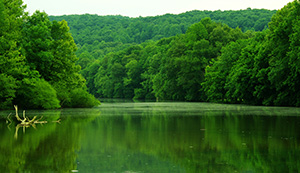
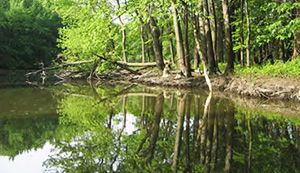
|
Country
|
Share of Total Flow with origin outside of border (%)
|
Turkmenistan
Egypt
Hungary
Mauritania
Bostwana
Bulgaria
Uzbekistan
Netherlands
Gambia
Cambodia
Syria
Sudan
Niger
Iraq
Bangladesh
Thailand
Jordan
Senegal
Israel
|
98
97
95
95
94
91
91
89
86
82
79
77
68
66
42
39
36
34
21
|
Source: Turkmenistan and Uzbekistan figures from David R. Smith "Climate Change,
Water Supply, and Conflict in the Aral Sea Basin", paper presented at the "Pri-Aral
Workshop 1994", San Diego State University, March 1994: Others from Peter H. Gleick,
Water in Crisis (NY, Oxford University Press, 1993)
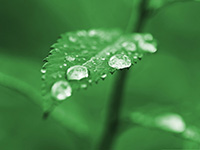 Within
the European Union (EU) agriculture represents around 30% of total water abstraction.
The intensity of irrigation in different countries obviously varies depending on
the climate, the crops cultivated and the farming methods. For example, the role
of irrigation is completely different in Southern European countries, where irrigation
is essential for agricultural production, compared to Central and Western Europe.
Within
the European Union (EU) agriculture represents around 30% of total water abstraction.
The intensity of irrigation in different countries obviously varies depending on
the climate, the crops cultivated and the farming methods. For example, the role
of irrigation is completely different in Southern European countries, where irrigation
is essential for agricultural production, compared to Central and Western Europe.
In fact the major part of irrigated land in Europe is located in the South with
Spain, Italy, France, Greece and Portugal accounting for 85% of the total irrigated
area in the EU. For example, in Spain irrigated agriculture accounts for 56% of
total agricultural production, occupying only 18% of the total agricultural surface.
Water resources for irrigation
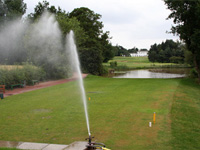 Water
used for agriculture comes from natural or other alternative sources.
Water
used for agriculture comes from natural or other alternative sources.
Natural sources includes rainwater and surface water (lakes and rivers). These resources
must be used in a sustainable way.
Rain water resources rely on the atmospheric conditions of the area. Surface water
is a limited resource and normally requires the construction of dams and reservoirs
with a significant environmental impact.
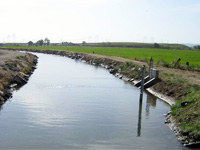 Alternative
sources of irrigation water are the reuse of municipal wastewater and drainage water.
Alternative
sources of irrigation water are the reuse of municipal wastewater and drainage water.
However the use of recycled water for irrigation may have some adverse impacts on
the public health and the environment. This will depend on the recycled water application,
soil characteristics, climate conditions and agronomic practises. Therefore it is
important that all these factors are taken into account in the management of recycled
water.
Lets study this a little bit further.
Reuse of water for irrigation
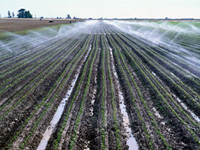 Water
reuse for irrigation is a normal practice worldwide. In Europe, for example there
is a large project in Clermont-Ferrand, France since 1997 where more than 10.000m3/day
of tertiary treated urban wastewater are reused for irrigation of 700Ha of maize.
In Italy more than 4000 Ha of various crops are irrigated with recycled water. Spain
also counts with several similar projects.
Water
reuse for irrigation is a normal practice worldwide. In Europe, for example there
is a large project in Clermont-Ferrand, France since 1997 where more than 10.000m3/day
of tertiary treated urban wastewater are reused for irrigation of 700Ha of maize.
In Italy more than 4000 Ha of various crops are irrigated with recycled water. Spain
also counts with several similar projects.
The water quality used for irrigation is essential for the yield and quantity of
crops, maintenance of soil productivity, and protection of the environment. For
example, the physical and mechanical properties of the soil, ex. soil structure
(stability of aggregates) and permeability, are very sensitive to the type of exchangeable
ions present in irrigation